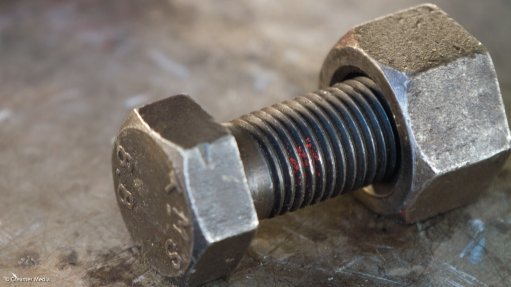
Photo by: Duane Daws
A collaboration between technology services supplier Bosch Software Innovations, US-based information technology (IT) company Cisco, Indian IT company Tech Mahindra and automation and measurement technology systems supplier National Instruments is driving forward tool connectivity with the aim of improving quality and efficiency in industrial manufacturing.
The first outcome of this “track and trace” collaboration project was the ability to determine the position of a cordless nutrunner on the shop floor with extreme precision, Bosch Software Innovations business development director Dirk Slama told delegates at the Cisco Live conference in San Diego, in the US, on Monday.
This effort was the first European testbed for the industrial Internet consortium.
“This positioning information is used to automatically select the correct torque for the respective task, making it possible to tighten safety-relevant screws with exactly the required force.
“It is also possible to automatically document these settings to ensure and test product quality. Open standards are set to enable the seamless integration of industrial power tools used to drill, tighten, measure and solder into an overall system of networked tools in the future,” he explained.
The potential applications of connected hand-held nutrunners, riveting tools and measuring equipment included the construction and maintenance of engines and aircraft.
“There is no other solution like this out there; it harbours major potential for industry as a whole,” said Slama.
INCREASED EFFICIENCY, COMPETITIVENESS
The new solution was made possible by connecting the tools with each other and with the production data for the products to be manufactured.
Owing to the tool’s positioning information and the precisely determined location of a component, such as an aircraft on the shop floor, the user knows, for example, that the tool is currently located at the vertical stabiliser. Backend software then automatically sends instructions that specify the force needed to tighten screws there.
“Connected tools contribute not only to product quality and safety, but also to making production more efficient, which improves competitiveness,” Slama said.
There were additional benefits to track and trace. For instance, the constant collection of tools’ data provided companies with a detailed overview of the conditions of their tools at all times.
This could enable the automation of a number of routine tasks, such as the replacement of wear parts on power tools after a specified number of rotations or hours of operation.
AVOID ERRORS, INCREASE SAFETY
The design and assembly of complex industrial and consumer goods required exacting work. Machinery, vehicles and aircraft needed the highest standards of quality.
Often, screws had to be tightened with precisely the right amount of force. In aircraft construction, for example, there were precise regulations that specified the kind of screw and the amount of force that needed to be applied to join specific parts.
“We are able to record the force used to tighten hundreds of thousands of screws and store that information in a database. The information makes it possible to quickly identify any discrepancies, and it provides users with clues as to the possible causes of faults,” Slama explained.
As a result, connected tools also aided in troubleshooting and error avoidance. If a worker tried to use a tool for the wrong task or at the wrong place, the tool powers itself down, preventing errors from occurring in the first place.
“This contributes to improving safety, quality and productivity,” he said.
*Shannon de Ryhove is in San Diego as a guest of Cisco.